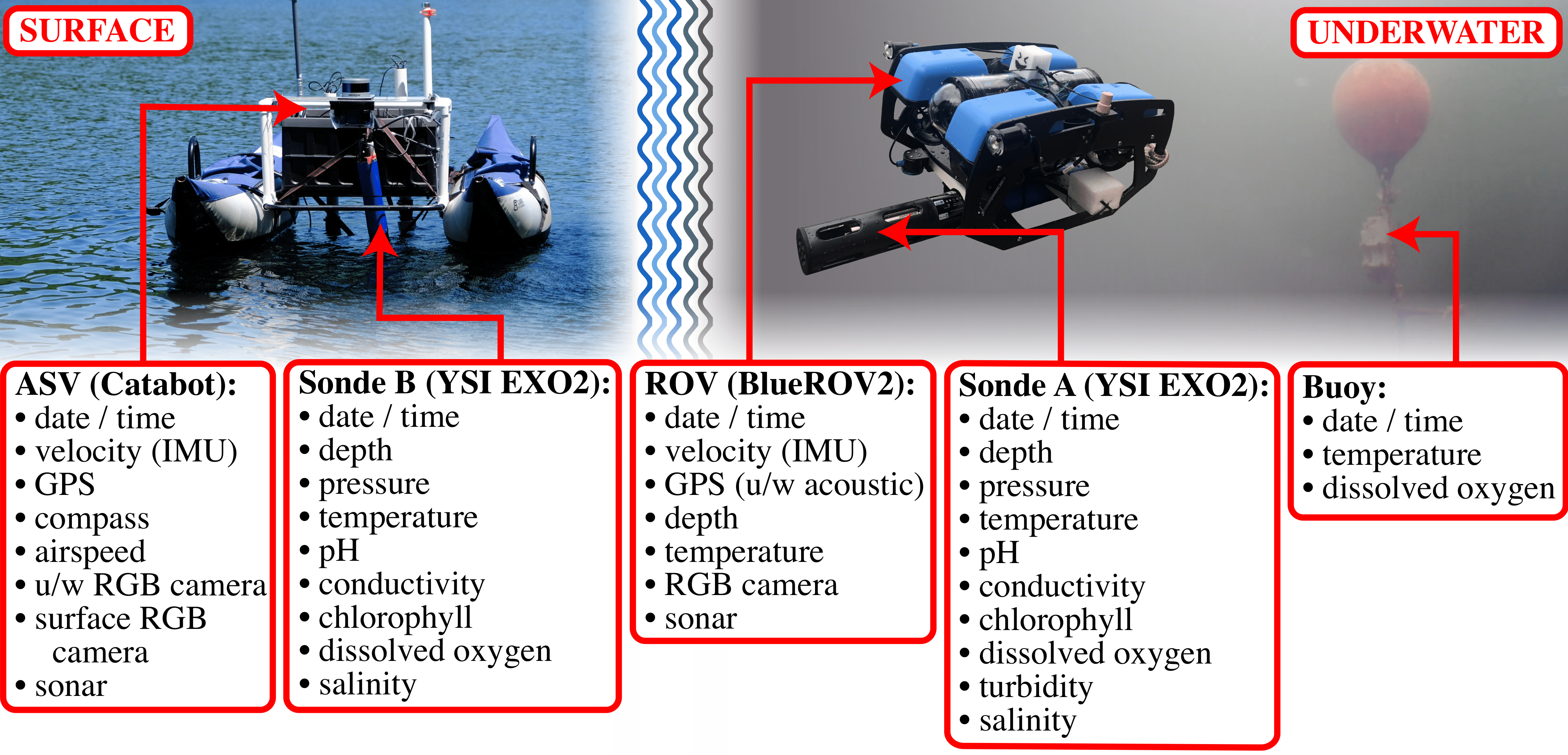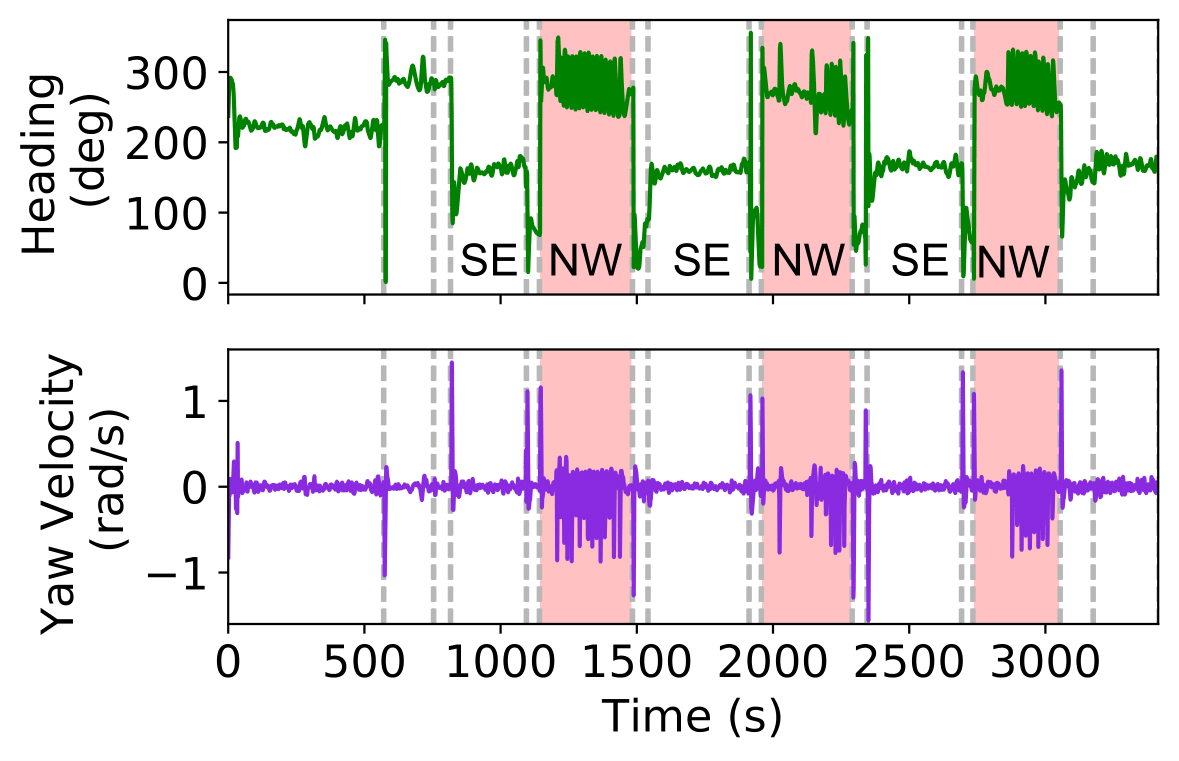Heterogeneous Robotic Water Quality Monitoring
Towards a Reliable Heterogeneous Robotic Water Quality Monitoring System--An Experimental Analysis
This paper describes experiments that tested the effect of
robotic movement on the reliability of aquatic sensor readings.
It also demonstrates the utility of a heterogeneous
system of robots to advance limnological monitoring and research.
An Autonomous Surface Vehicle (ASV) and
an underwater Remotely Operated Vehicle (ROV), both equipped
with multiparameter water quality sondes, were deployed weekly
in Lake Sunapee, NH, to collect routine measurements
horizontally over the water surface and vertically
in the water column, respectively.
We then compared the robot-collected data with data
from fixed underwater instrument platforms (buoys) outfitted
with a complementary suite of sensors as well as
manually collected samples. The question we are answering are as follows:
* How do robotic motions affect water quality sensor response time?
* How do water quality measurements compare between robots and fixed-location buoys?
* How can robotic coverage paths best complement and extend monitoring data from discrete water samples (i.e., chlorophyll-a concentrations)?

This image can also have a caption. It's like magic.


ASV deployment at China Lake, ME on October 6, 2020. (a) Proprioceptive data of ASV. The red shaded areas indicate when ASV adjusted its heading to counteract external forces while following the NW direction. (b) Coverage paths and measurements of surface water chlorophyll (RFU) linearly interpolated across an area of 0.04km^2. The red tracks indicate the same time intervals as the shaded area in (a). The red arrow is the starting direction.
Here is a video I have presented at ISER2021.